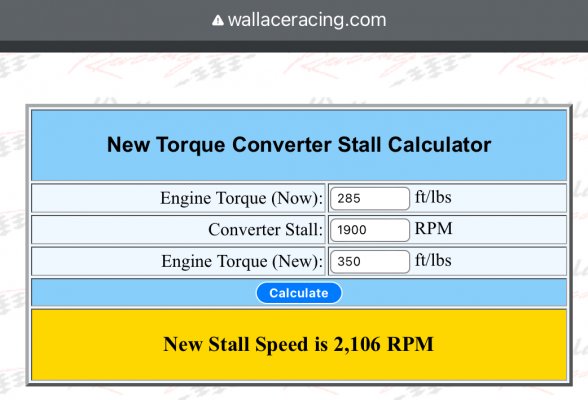Going down the rabbit hole on stall speed for a converter, what I get so far.
I need to go deeper, for sure. Preliminary conclusion is that i need to keep the torque (specifically looking at the cam) down to a point where i can keep the torque converter under 3000.
1. Accurately deciding stall speed has a lot of factors: curb weight, cam, tire diameter, engine torque curve, drive ratio, etc.
2. Any torque converter >= 3000 will definitely require tuning.
(Seems like just about any changes work better with some tuning), Plus, the expense of the converters goes way up. I want to avoid these consequences as much as possible.
- It appears that this most directly can be attributed to the cam.
Still investigating.
I’d never heard of stall speed before, but here we are..


